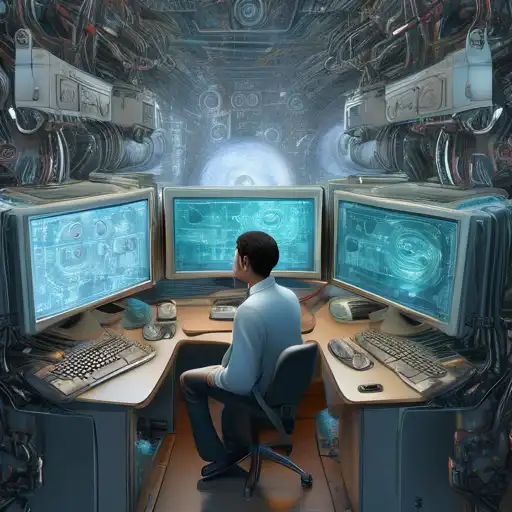Introduction to Computer Vision
Computer Vision is a field of artificial intelligence that trains computers to interpret and understand the visual world. By leveraging digital images from cameras and videos and deep learning models, machines can accurately identify and classify objects — and then react to what they "see."
How Computer Vision Works
At its core, computer vision involves the automatic extraction, analysis, and understanding of useful information from a single image or a sequence of images. This process involves several steps, including image acquisition, processing, analysis, and understanding. The ultimate goal is to emulate human vision, enabling machines to perform tasks such as recognizing faces, interpreting scenes, and even making decisions based on visual inputs.
Key Technologies Behind Computer Vision
- Image Processing: Enhances the quality of images to prepare them for analysis.
- Machine Learning: Algorithms learn from data to make predictions or decisions without being explicitly programmed.
- Deep Learning: A subset of machine learning that uses neural networks with many layers to analyze various factors of data.
- Pattern Recognition: Identifies patterns and regularities in data to classify and interpret visual information.
Applications of Computer Vision
Computer vision has a wide range of applications across various industries. Here are some of the most impactful ones:
- Healthcare: From diagnosing diseases with medical imaging to assisting in surgeries.
- Automotive: Powers self-driving cars to understand and navigate their environment.
- Retail: Enhances shopping experiences with virtual try-ons and automated checkouts.
- Security: Improves surveillance systems with facial recognition and anomaly detection.
Challenges in Computer Vision
Despite its advancements, computer vision faces several challenges, including the need for large datasets for training, the complexity of real-world environments, and issues related to privacy and ethics, especially in applications like facial recognition.
The Future of Computer Vision
The future of computer vision is incredibly promising, with ongoing research focused on improving accuracy, efficiency, and applicability. As technology advances, we can expect computer vision to become even more integrated into our daily lives, transforming industries and creating new possibilities for human-machine interaction.
For those interested in diving deeper into the world of artificial intelligence and machine learning, exploring machine learning basics can provide a solid foundation for understanding how computer vision algorithms are developed and trained.
Computer vision is not just about teaching machines to see; it's about opening up a new realm of possibilities where machines can assist, enhance, and sometimes even surpass human capabilities in interpreting the visual world.
